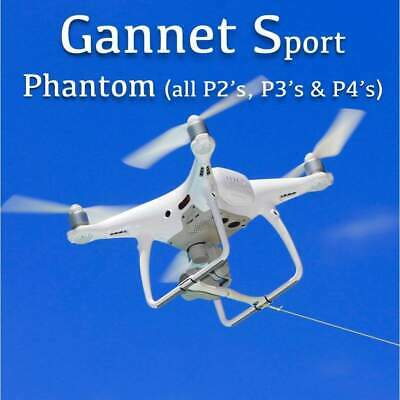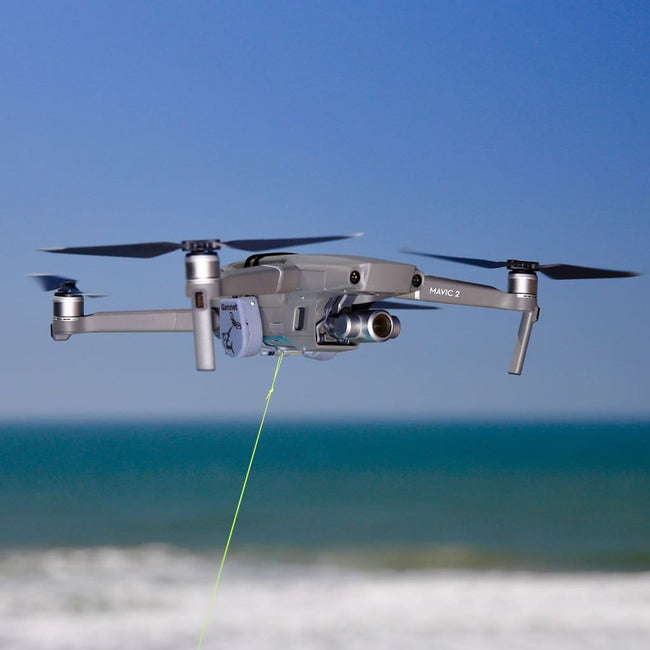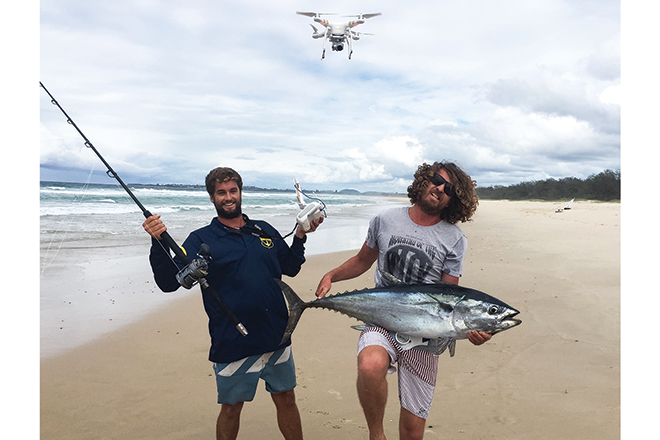
If you're a fisherman looking to land the big catch of your dreams, a drone could be the answer. Drones are a great way to survey a particular area. Some drones even come with a Cable Cam feature, which allows you to fly your drone as if it were a cable. When you are searching for fishing spots, the cable cam feature is very useful. When not in use, the drone can be folded and stored in your fishing bag.
Fisherman FD1
A drone that's good for fishing, but not so good for fishing yourself? A Fisherman FD1 drone fishing set is a good option. The drone has features that will improve your fishing experience. These include an altimeter pod and elevated GPS pod to ensure precise positioning and control. The GPS and altimeter will reduce interference from the surrounding environment. The drone's GPS will always point towards north to prevent you accidentally resetting it. A push-button remote button can set the camera's color HD view to capture real-time color images. The remote control range is up to 1600m. Finally, the Fisherman FD1 drone is now possible to be controlled from a remote control.
The SwellPro Fisherman waterproof drone has a HD camera and FPV glasses. It can hold a 2kg bait, and can also drop a 2-kg bait in the water. It can fly in as little as 30 minutes and features an internal waterproofing mechanism. You can upgrade your Fisherman drone with an additional camera and/or FPV goggles if you are concerned about its durability.
Cuta-Copter Ex-1
Cuta-Copter Ex-1 is the perfect drone for you if you want to fly your own. The drone can be used to take amazing photos and videos from far away. It has a range of 3.5 miles and a battery life of five hours. It can fly for 30 minutes at maximum, giving you plenty of time to cast your lure and use the return-to-home feature. The drone is also very stable when hovering so there's no risk of it falling over while you're casting.

Cuta-Copter EX-1 Fishing Drones are waterproof and can be floated on water. The Ex-1 drone can hold up to 3 kg of bait. You don't get a charger or battery with the drone. But you can use the Cuta-Copter App to remote control your drone while you are fishing. You get the best of both. You'll enjoy an unforgettable experience when you master the art of fishing using your Cuta-Copter ex-1 drone.
Upair
The Upair is easier to use than other drone fishing tools and can be used for stunning footage. The Upair can fly for 20 minutes on average and has a range up to 0.5 km. It has a high-resolution camera and a LCD screen for its controller. Upair's GPS receiver and FPV monitoring transmission ensure that you have the best possible view of the lake where you're fishing. The drone can be programmed and sent to a destination address. If the signal goes out, it will automatically return home.
Upair comes with a Downrigger Attachment that can be attached to the landing gear on your remote-controlled fishing boat. This feature allows you to reduce the fishing work and allow you to concentrate on catching fish. The downrigger can be connected to your fishing line or bait, and the drone will fly in the air and drop it to the location of your choice. You can even attach your drone to your fishing boat to drop your bait!
Cosee unmanned aircraft system
Cosee's drone fishing kit (UAS) has some unique features that make it a great new tool for fishing. You can cast your lines from an altitude over 98 feet, and it allows you to see what species you are fishing for. The fish finder is integrated into the device, as well as a camera and camera to help you record your fishing trip. This technology is ideal to surf fish, as you can drop your bait away from your boat and still catch the fish.

In order to take advantage of this unique technology, you'll want to be familiar with the rules and regulations for flying your drone over bodies of water. You'll want to stay about 40-60 feet away from the boat when fishing, and make sure to fly the drone straight up. To avoid hitting people, buildings and power lines, keep the drone at a constant cruising speed. You can also use this system to film other fishermen's fishing excursions, or even to share them with your own followers.
FAQ
How can I keep drones off my property?
Drones have become increasingly popular for home surveillance. But they also pose a security threat to privacy. Install motion sensors on your property to detect any unapproved flying objects. This will help you avoid being attacked by drones.
Can my drone be flown indoors?
You can fly your drone indoors. There are only a few things you need to do: Make sure your home is free of obstacles and hazards. You should not fly near windows, doors or heating vents.
What is the maximum height you can fly a drone with no license?
The FAA does not limit the height of a drone. You will need to register your unmanned aircraft system (UAS), including the registration number and model name, weight, dimensions, serial number, manufacturer's number, date manufactured, and any other information.
Are drones allowed at public events?
You can fly your drone anywhere you like, provided you adhere to the rules. However, if you plan to fly your drone during a public event such as a parade, festival, or concert, you will need approval from the event organizers.
Can my drone be flown around my neighbourhood?
Yes! These are called UAVs, or unmanned aerial vehicles. There are many different types of drones that you can buy today, including small quadcopters as well as large fixed-wing aircraft. The FAA has recently issued new rules regarding the commercial use of UAVs, which means you can now legally fly them for business purposes. You should be aware, however, that UAVs flying near airports can cause interference with air traffic control systems. To operate one, you will need to obtain permission from the local authorities.
What are the laws regarding flying drones
The Federal Aviation Administration (FAA), regulates drone operations in the United States. The FAA must issue a certificate before you can commercially operate a drone. Next, you will need to complete a course in flying skills and pass an exam. Finally, you must pay a fee to the agency.
Statistics
- According to ZipRecruiter, the minimum hourly wage of drone pilots is $20. (thedroneu.com)
- According to the multiple listing service (MLS), houses and apartments with drone photographs are up to 68 percent more likely to sell than those without pictures. (thedroneu.com)
- According to Indeed, a drone pilot gets paid $25.73 per hour on average in the US. (dronesgator.com)
External Links
How To
How to Fly Drones With Beginners
A drone is a remote-controlled aircraft used for aerial photography, cinematography, surveillance, scientific research, and hobby purposes. Drones are a technology that has been around since World War II. DJI's Phantom quadcopters became commercially available in 2010. Many types of drones have been made available since then, from beginner-friendly models such as the Parrot AR Drone 2.0, to high-end multi-rotor craft such as the DJI Mavic Pro.
There are many methods to fly a Drone, including
-
Remote control – This technique uses a control device attached directly to your hands that allows you steer the drone around its flight path. There are two main types of controllers: On/Off switches (like a radio) and joysticks.
-
Manual Control – This allows remote operation of the drone via GPS coordinates using a smartphone application. You will need to keep track of where the drone is going and follow the directions from the app.
-
Autonomous Flight – This is when the drone handles all the piloting tasks. It's basically flying autonomously without any human intervention. To enable autonomous flight, the drone should have a built in camera and sensors capable recording images and data.
-
Triggered Flight - This method is similar to manual control, except the pilot manually sets up a preprogrammed route, and the drone follows that route until it reaches the endpoint. After the preprogrammed route is complete, the drone will automatically land and return to its base.
-
Landing Gear – A few drones come with landing gear. This allows them land safely in the event of losing power or running out of battery.
-
Goggles – Pilots often wear goggles while flying to keep themselves safe from any debris.
-
Camera - Certain drones come with cameras that allow you to take photos and videos from high above.
-
Obstacles – Some drones have obstacle avoidance systems that stop them from colliding with obstacles.
-
Speed - Drones can reach speeds up to 40 mph.
-
Battery Life: Most drones have a battery life of between 20 and 30 minutes depending on how many power sources you use.
-
Distance - Some drones can travel up 30 miles depending on the model.
-
Power source – Some drones require external power sources, others require internal batteries.
-
Weight - Some drones weigh less than 1 pound, whereas other models weigh up to 4 pounds.
-
Size - Drones range from small devices that fit in one's palm to large crafts that weigh more than 50 pounds.
-
Price - From high-end models that cost thousands of dollars to low-cost options that start at $100, all drones fall under a certain price category.